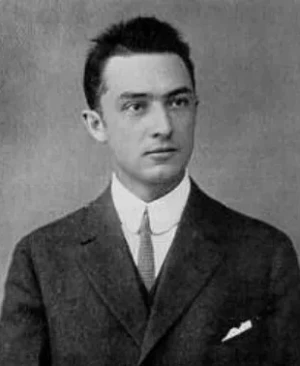Biography of William Carlos Williams

| date | place | |
|---|---|---|
| born | September 13, 1883 | Rutherford, New Jersey |
| died | March 04, 1963 | Rutherford, New Jersey |
William Carlos Williams (1883–1963) was an American poet and lifelong physician whose double vocation became the signature rhythm of his life. Born in Rutherford, New Jersey, to an English father and a Puerto Rican–French mother, Williams grew up between languages and cultures, an early cosmopolitanism that later fed his sense of what an American voice could be. He studied medicine at the University of Pennsylvania, where he met Ezra Pound and H.D., friendships that placed him near the center of early modernist experimentation even as he chose to remain rooted in his hometown. After an internship in New York City, Williams returned to Rutherford to open a general practice that lasted more than four decades. He married Florence “Flossie” Herman in 1912, and they raised two sons while he delivered babies by day and wrote by night, often drafting lines between house calls. His medical rounds—kitchens, back porches, crowded tenements—gave him a ground-level view of American life that became the raw material for his poetry and prose. Major books arrived in steady sequence: “Kora in Hell” (1920), “Spring and All” (1923), the hybrid historical prose of “In the American Grain” (1925), and, later, the multi-volume epic “Paterson” (1946–1958), a portrait of a New Jersey city as a living American poem. Health setbacks in the early 1950s, including strokes, slowed him but did not silence him; controversy briefly derailed his selection as Consultant in Poetry to the Library of Congress, yet his stature only grew. In 1963 he received the Pulitzer Prize posthumously for “Pictures from Brueghel,” affirming a career that had, from the start, insisted on fidelity to the local, the immediate, and the real. As a poet, Williams helped reimagine what American poetry could sound like, look like, and notice. Early proximity to Imagism sharpened his preference for clarity, concrete nouns, and the charged instant—think of “The Red Wheelbarrow,” where rain-glazed glaze and an ordinary wheelbarrow become almost sacramental in their specificity. But Williams moved beyond pure imagism into a distinct American measure: short, stepped lines; variable feet; and an attention to line-breaks that mimic breath and the cadences of American speech. He wanted poems to be made from the materials of everyday life—plums in an icebox (“This Is Just To Say”), glazed chickens, red wheelbarrows, city rivers, hospital waiting rooms—because he believed that the ordinary, properly seen, contains the extraordinary. His often-quoted credo, “no ideas but in things,” summarized both a technique and an ethic: trust the object, the moment, the thing seen, and let meaning arise from exact perception rather than abstract statement. Williams’s importance in U.S. poetry is twofold—stylistic and civic. Stylistically, he offered a rigorous alternative to the high European allusiveness of his friend-rival T. S. Eliot. Where Eliot turned to myth and the classics, Williams turned to Paterson Falls and the speech of grocers, immigrants, and schoolchildren. He sought a native prosody, a democratic music made from the nation’s mixed idioms. This pursuit led him to influence several later movements: the Objectivists (Louis Zukofsky, George Oppen, Charles Reznikoff) embraced his attention to particulars and sincerity of address; the Black Mountain poets (Charles Olson, Robert Creeley) adapted his open-field possibilities and variable foot; the Beats, especially Allen Ginsberg—whom Williams championed and introduced—carried forward the insistence that American life, in its immediacy, is proper poetic substance. Civic importance followed from this stylistic stance: Williams’s poems honor the overlooked, treat patients and neighbors as subjects worthy of lyric attention, and propose that the American poem be built not from imported forms but from local observation and spoken rhythms. His long poem “Paterson” tried nothing less than to write a city’s biography as a poem, mixing documents, letters, and lyrical passages to test how public and private histories braid together on American ground. His technical innovations were subtle but decisive. Williams’s “triadic” or stepped line creates a visual and rhythmic score on the page, coordinating breath, emphasis, and pause. His diction favors monosyllables and Anglo-Saxon roots, achieving a clean pressure in short lines. He trims adjectives, avoids rhetorical flourish, and lets juxtaposition do the work of metaphor: a wheelbarrow beside white chickens, a note of apology beside the taste of cold, sweet plums. The result is a poetry that feels both spare and sensuous, plainspoken yet luminous, modern without severing itself from touch and sight. As a man and as a poet, William Carlos Williams embodied the art of attention. He listened to heartbeats with a stethoscope and to syllables with the same care; he stitched wounds and lines alike with an ethic of exactness. He stayed in Rutherford to prove a point—that a modern American poetry could thrive away from capitals and salons, arising directly from streets, kitchens, and rivers. His legacy is a method and a mandate: look closely, say it plainly, trust the thing seen. In doing so, he gave American poetry a local habitation and a fresh, durable music, reminding readers that the ordinary—properly seen—becomes the groundwork of wonder.
Feel free to be first to leave comment.